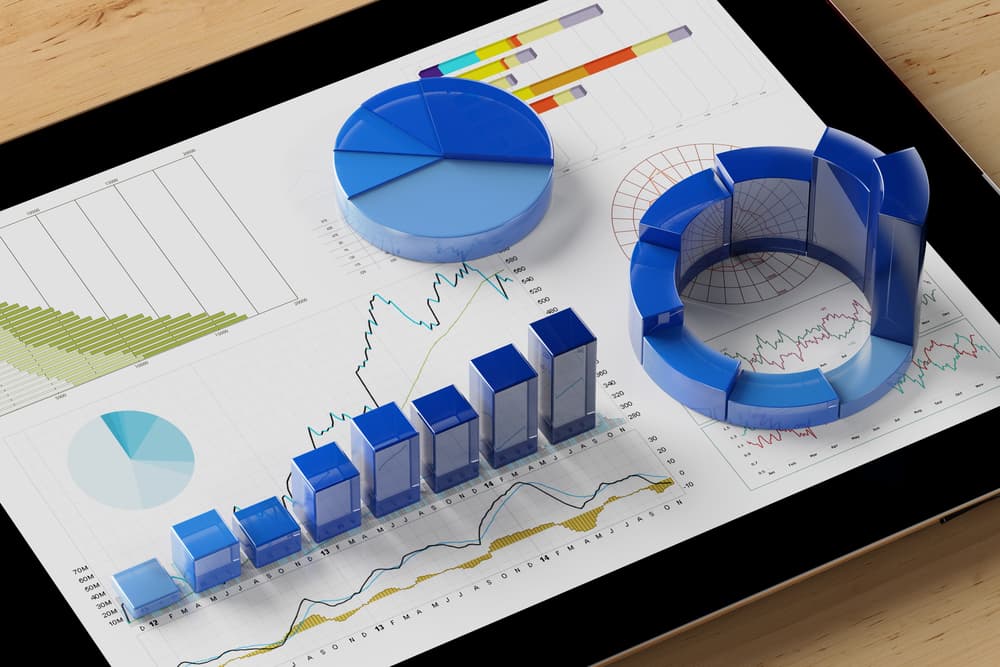What Is Customer Data Management? | McGRAW
Mar 26, 2025Customer Data Management (CDM) is the strategic process of collecting, organizing, and utilizing this invaluable asset to drive business growth...
As a business leader, you always look for ways to grow your business and surpass your goals. Growth marketing is one of the most comprehensive approaches to sustainable business expansion. A growth plan is a strategic marketing method that focuses on acquiring and retaining customers.
If you’re serious about growing your business, you need a growth marketing plan. But where do you start?
In this blog post, we’ll walk you through the steps of creating an effective growth marketing plan. We’ll cover everything from setting goals to choosing the right channels and measuring your results.

A growth plan is a strategic roadmap for growing your business through marketing efforts. It should outline your goals, target audience, marketing channels, and metrics for success.
A growth marketing plan is different from a traditional marketing plan in a few key ways. First, it focuses more on results. It’s all about driving growth. For your business, this could mean increasing sales, acquiring new customers, or expanding into new markets.
Second, a growth marketing plan is constantly adjusted. It’s not a one-and-done approach. It is a data-driven strategy that involves testing and optimizing to find the most effective strategies for your business.
Growth marketing strategies offer businesses an array of benefits. Here are just a few:
Now that we’ve covered the basics, let’s dive into the steps for creating an effective growth marketing plan.

Creating a market growth strategy can seem daunting, but it’s actually quite straightforward. It involves several marketing factors you might already be familiar with. Here are the steps involved:
The target audience is the most important factor to consider for any marketing strategy. Your growth marketing plan should start with a deep understanding of who your audience is.
Who are you trying to reach with your marketing messages? What are their needs and pain points? How do they make purchasing decisions?
You can gather this information through market research, surveys, and customer data. Knowing your existing market will help you create targeted messaging and campaigns that resonate with them.
The universal truth is that you can’t measure success without setting goals. This applies to personal and business aspirations. Your business growth strategy should include clear objectives.
A good principle is following the SMART system, which stands for Specific, Measurable, Attainable, Relevant, and Time-bound goals. Following this framework will help you define clear objectives. Most importantly, since growth marketing relies on data, SMART goals will guarantee you can track and measure your progress.
So, think about what you want to achieve with your growth marketing plan and be as specific as possible. For example, instead of saying “increase brand awareness,” say “increase website traffic by 20% in 6 months.”

Growth marketing is all about understanding your customer’s journey and optimizing it for conversions. You need to analyze how your audience moves through the funnel and the final push they need to convert. Identify potential roadblocks and areas of improvement.
The customer journey includes four main stages. In each one, your customer base has specific needs you must meet to convince them to choose you.
In the awareness stage, customers recognize they have a problem. However, they might not know exactly what that problem is or how to fix it.
In this stage, you can tailor your messages to make potential customers aware of your brand and what you offer. You should encourage them to learn more about your products or services.
In this stage, customers understand they need a solution. However, they are still looking at all their options, analyzing which would best help them solve their problem.
For your customers in the consideration stage, you should make them think about your brand as a viable solution for their needs. Your messages should create desire and excitement around your product or service. You should emphasize that you offer the best solution to their problem.
In the conversion stage, your potential customers take the final action and become paying customers. They might choose you depending on how you’ve met their needs in the previous stages.
You must reassure them that your product or service will fulfill their needs and offer a smooth customer experience. Your message should focus on highlighting your unique selling propositions. Prove why you are the best solution to their problem.
In this stage, your potential customer has already become a paying customer. However, you don’t want this to be a one-time purchase. Your goal is to keep them coming back for more. Techniques for strengthening customer relationships could include providing helpful resources, personalized communication, loyalty programs, and more.
All these stages require different messaging strategies to cater to the specific needs of your audience. By understanding your customer journey, you can create targeted campaigns that help move potential customers through the funnel.
It’s also important to note that no person moves through the marketing funnel the same way. Having a clear picture of your customer journey can help you segment your audience based on where they are in the funnel. You can then prioritize your audience segments, considering which one is getting you the best results.
![]()
Once you identify your target audience and weaknesses in your customer journey, you can choose your marketing channels.
There are different marketing channels you can choose from. These include SEO, SEM, content marketing, social media marketing, and email marketing. However, your audience will ultimately determine which channels you must use. So you must really think about where your target customers spend their time and where in their customer journey you can attract them.
Adopting an omnichannel approach is crucial in a world where consumers constantly switch between devices and platforms. This means you must consider adapting your marketing messages across multiple channels.
In growth marketing, testing is a crucial component of success. You can use various growth marketing tactics to determine the most effective ones for your audience. Some growth marketing strategies include:
Remember, growth marketing is all about testing. You can try various tactics and evaluate results to determine which ones have proven more effective for your audience.

Your marketing budget will impact the tactics you can implement and how often you can test them. Growth marketing is known for being a cost-effective approach. However, smaller businesses will probably have to limit their spending. This means it’s vital to strategically allocate your budget across different marketing channels.
At this point, you should really know your audience and where they are in the customer journey. This will help you determine which channels and tactics you should prioritize.
As mentioned above, data-driven decision-making is an important component of growth marketing. Using your previously defined marketing objectives, you can analyze your results and identify what’s working and what’s not. You should have analytics tools running on all your channels to track your plan’s performance effectively.
This data will help you determine what needs adjusting. Don’t be afraid to make changes if something is not working. And most importantly, focus on continuously testing and optimizing your tactics to drive growth.

If you’re looking to achieve sustainable growth, growth marketing is key. By following the steps outlined in this blog, you can create a growth marketing plan that will help you reach your goals.
At McGRAW, we’re a growth marketing agency that can help you create and implement a personalized growth strategy. We use our very own “Swell Strategy,” a 12-month growth plan tailored to your business and designed to help you achieve your growth goals.
If you’re ready to reap the benefits of growth marketing, contact us today. We’re here to help your business scale.

Customer Data Management (CDM) is the strategic process of collecting, organizing, and utilizing this invaluable asset to drive business growth...

In the competitive auto insurance industry, lead scoring is an invaluable tool for sales teams to prioritize and focus on...